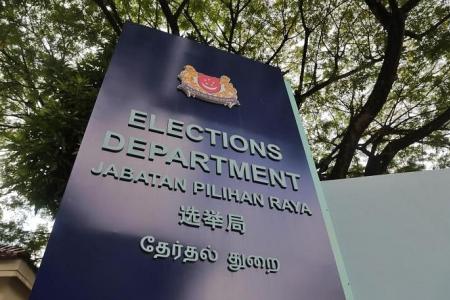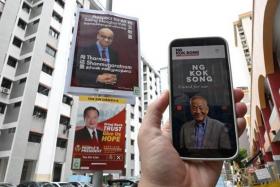Presidential Election: Six things to know before going to the polls
With Prime Minister Lee Hsien Loong having issued the Writ of Election on Friday, the timeline is now set for the presidential election.
The next stage of the process will be Nomination Day, on Aug 22, when Singaporeans will find out if they get to cast their vote.
If more than one person qualifies to run for the presidency, voters will go to the polls on Sept 1. Here are six things to know ahead of polling day.
1. Singpass will be accepted
For the first time, voters will be able to use the Singpass app to verify their identity at polling stations.
In the past, such as at the 2020 General Election, this verification was done using the physical National Registration Identity Card (NRIC).
The Elections Department has said that those who do not have a Singpass account can still choose to use their pink NRIC.
2. More polling stations and officials, shorter wait time
More polling stations will be set up, which will cut waiting time for voters.
The Elections Department (ELD) has planned for 1,264 stations, up from the 1,097 during GE2020. With the increase, the number of voters allocated to each station will be reduced to an average of 2,150, from 2,400 before.
Each polling station will also have more registration counters and ballot paper counters. Around 36,000 election officials will be deployed, compared to 30,000 previously.
3. Checking the queues
For those still worried about long queues, the VoteQ website will let voters check the queue status at individual polling stations.
During GE2020, when it was first used, voters had to remember the URL and key it in to access the site. This time, voters can access VoteQ via a hyperlink on their ePoll card in Singpass.
They can also scan a QR code on their physical poll card, which will be mailed to them after Nomination Day if the election is contested.
4. New stamp for voters to mark their choice
A new X-stamp will be introduced for voters to mark their ballot – one that is wider and more clearly intended to serve as a stamp.
Use of this stamp, while encouraged, is not compulsory. Voters can take along their own pens.
Self-inking pens were first introduced at GE2020. Then, some voters had tried to write a cross with the X-Pen.
5. Overseas postal voting allowed, envelopes should be postmarked
Since overseas voting was introduced in 2006, Singaporeans abroad have had to vote in person at polling stations set up at Singapore missions in selected cities.
At the upcoming polls, voters living overseas will now be allowed to vote by post.
One thing to note: return envelopes need to bear a postmark. This is necessary to ensure the vote was cast before the results of the local vote counts are known, said ELD.
It is suggested that postal voters in certain regions or countries affix postal stamps on their return envelopes to ensure that they are postmarked.
These locations are: Israel, Oman, Saudi Arabia, Turkey, United Arab Emirates, Australia, New Zealand, Cambodia, Indonesia, Laos, Thailand, Vietnam, Bangladesh, Belgium, Brazil, Ghana, India, South Korea and Taiwan.
6. Special polling stations in nursing homes
Nursing homes with more than 50 voters will have special arrangements made, such as on-site polling stations or mobile polling teams.
This will cater to 25 to 30 nursing homes and over 2,000 voters, or about two-thirds of registered voters currently residing in nursing homes.
The list of nursing homes in the pilot initiative will be made public on Nomination Day, if the election is contested.
Get The New Paper on your phone with the free TNP app. Download from the Apple App Store or Google Play Store now


